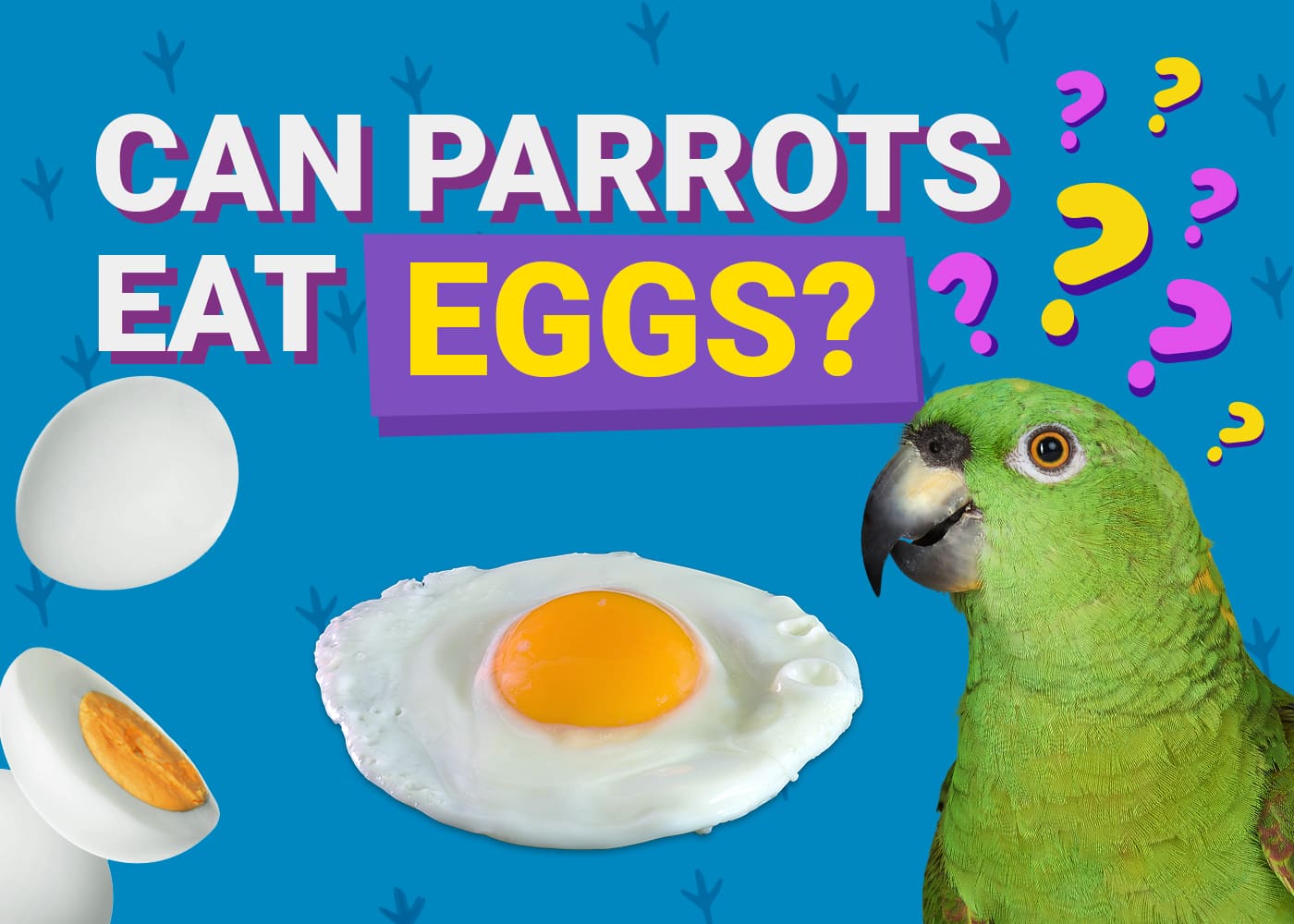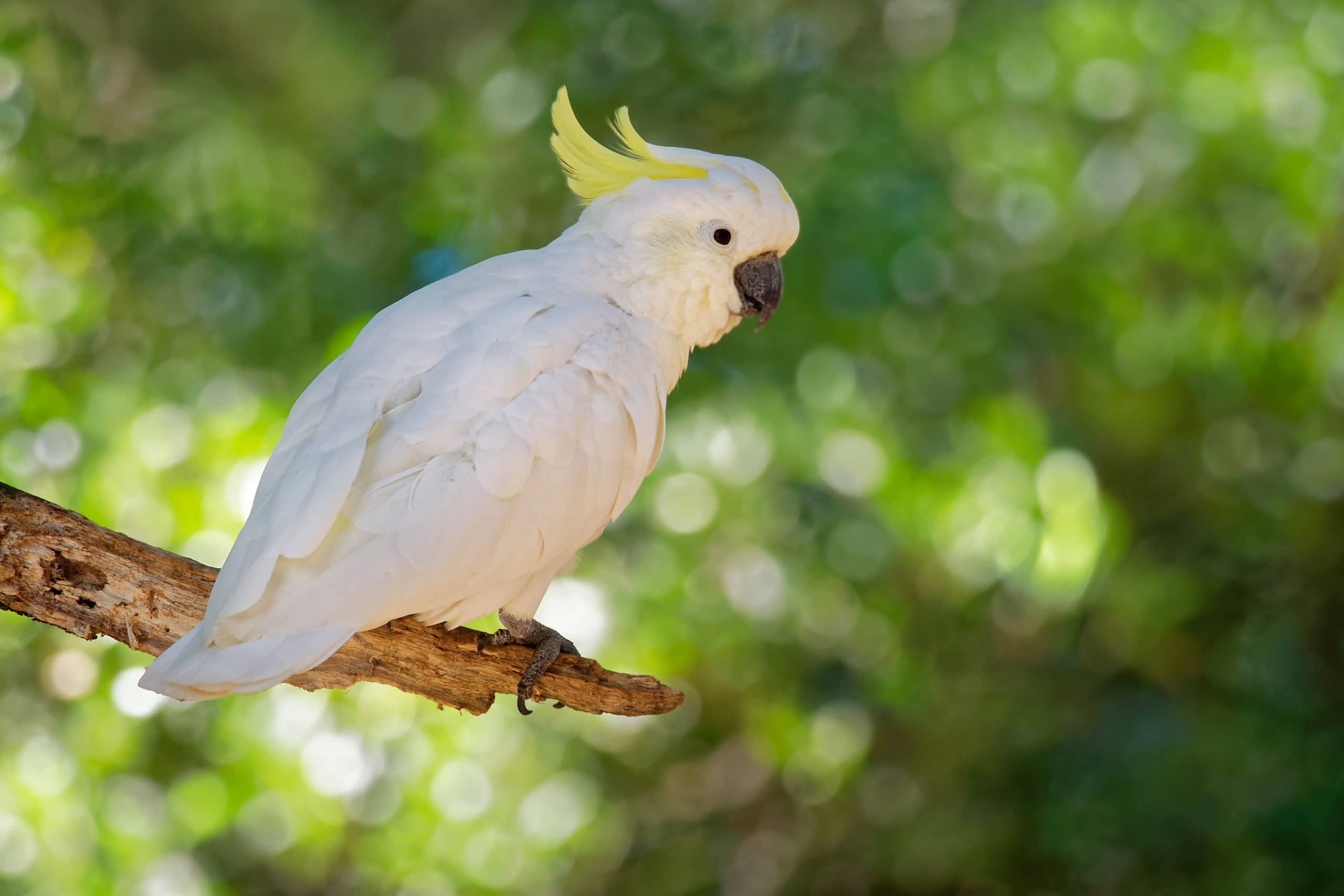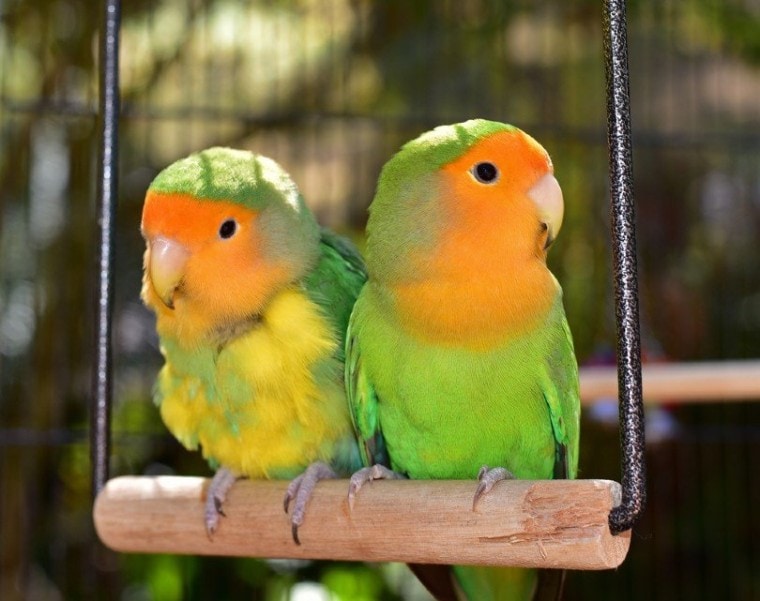
Are you looking for a colorful feathered companion to have as a pet? Perhaps a lovebird is a great choice for you. Lovebirds belong to the parrot family and can live up to 10–12 years. They thrive better when they are bought in pairs because these birds develop close-knit bonds with other lovebirds and even with people—hence their name. They are intelligent, affectionate, and well-known for their vibrant colors. The lovebirds’ blend of colors is often what catches people’s eyes when considering which bird to adopt.
Lovebirds’ plumage is of a combination of colors on their body and face, ranging from green, yellow, peach, orange, violet, teal, or white. Their beaks even vary in color! Here is a list of the most common color blends of lovebirds that would make great pets.
Top 5 Lovebird Color Mutations
1. Peach-Faced Lovebirds
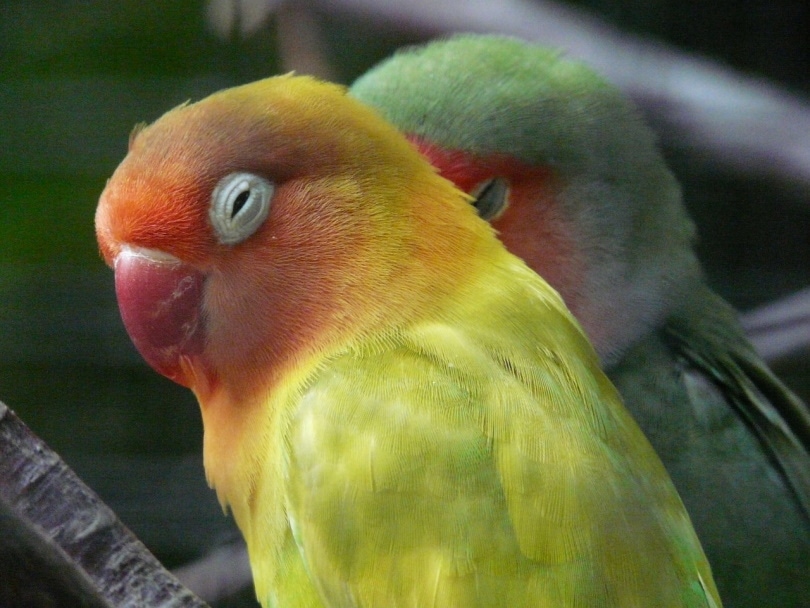
The peach-faced lovebird, or rosy-faced lovebird, got their name by their distinct coloring. These lovebirds have rosy pink or peach-colored faces and throats. This color gets darker as the plumage reaches their foreheads, changing to an orange or red color. The plumage on the rest of their body is a vibrant to dark green. Some of these lovebirds have yellow-colored chests. Their beaks are a bone or horn color.
2. Fischer’s Lovebirds
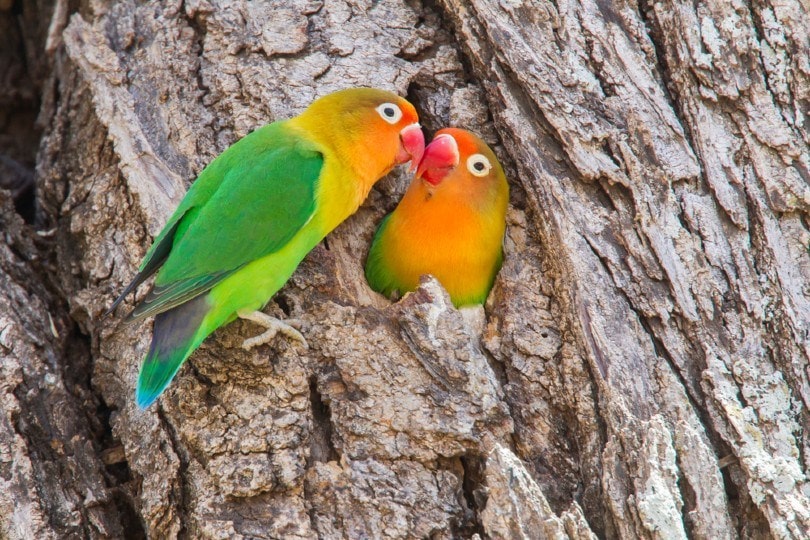
Also known as the eye-ring lovebird, this bird has a color combination of green, yellow, and orange. Both sexes are usually the same color pattern. The plumage on their backs, chests, and wings is a vibrant green, slowly fading to golden yellow and then a dark orange color at their neck. Fischer’s lovebirds have a signature white circle around their eyes. The tops of their tails can have some blue or purple feathers.
3. Black-Masked Lovebirds

Like other lovebirds, the black-masked lovebird gets its name from its distinctive black masking on its face with prominent white rings around its eyes. However, these lovebirds are also known as the yellow-collared lovebirds due to the yellow plumage on their necks and upper chests. The rest of their bodies have the signature bright green plumage, with their tails sometimes having some blue accents. Their beaks are a vibrant red.
4. Violet Lovebirds
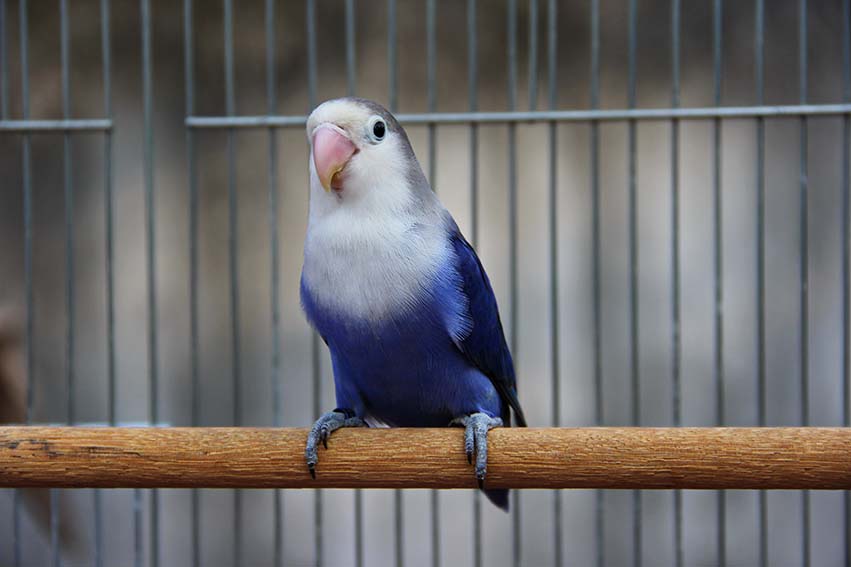
The violet lovebird’s plumage varies from light lavender to deep purple. These lovebirds also have a white collar of plumage around their neck and upper chest. Depending on the mutation of the Violet Lovebird, they might have a white face of plumage or a black mask. Violet lovebird will also have a light, peach-colored beak.
5. Australian Cinnamon & Orange-Faced Lovebirds
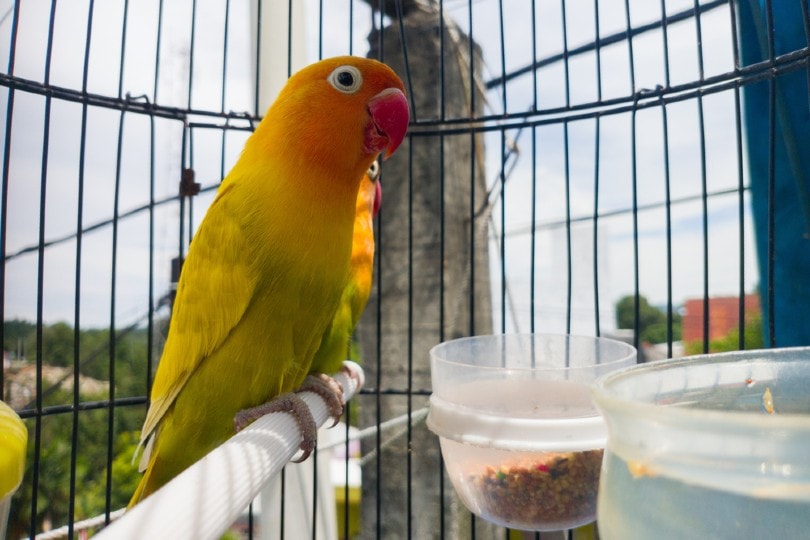
The Australian cinnamon & orange-faced lovebirds have similar color patterns as the Fischer’s lovebirds. They have red and dark orange plumage on their face and the plumage changes to yellow around their neck and part of their upper chest. The rest of their body is the signature lovebird vibrant green. What makes this lovebird stand out is the ruby-red eyes they have when they are young. The eye color fades as they get older, but the plumage remains bright.
Final Thoughts
There are other lovebird colors, but these are the most common among lovebirds that are available as domesticated pets. There are other species of lovebirds that live in the wild. They are amazing to watch but do not make good pets as they do not do well in captivity.
No matter which color variation or mutation your lovebird has, it will be vibrant and lovely to look at. In addition to their affectionate nature, the plumage of the lovebirds helps make them a popular and well-loved pet.
Featured Image Credit: Tracy Starr, Shutterstock





